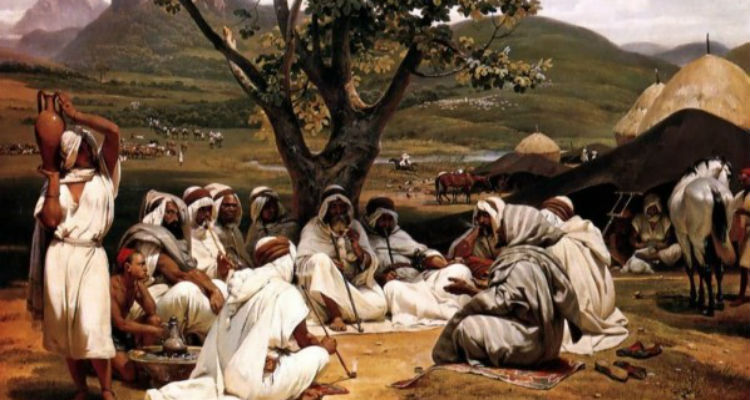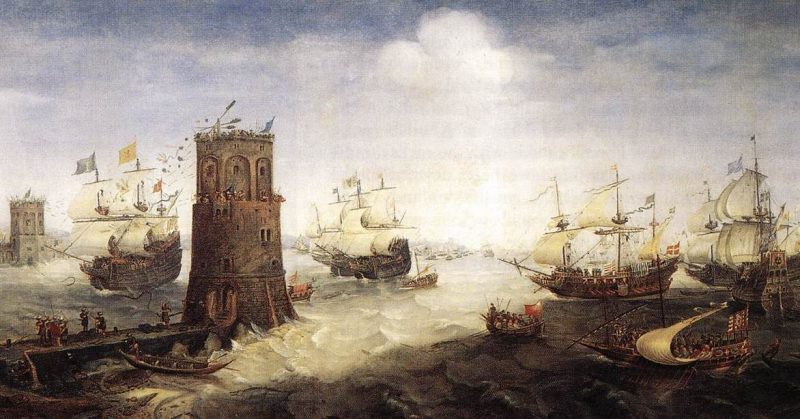There seems to be a fixation on The Moors in Europe and on Dynastic Egypt but no The Crusades in Africa which is a middle point. A lot of people make it seem as though The Moors descended on Europe without rhyme or reason, and some speculate that the Transatlantic slave trade was retribution for the Moorish invasion and we never really got to the root of WESTERN Europe's fixation with Egypt so lets discuss because its much deeper than that
What were the Crusades and how did it begin?

What is the historical context of Christianity in Africa?

Who was Saladin and what was his role in Egypt? This was a bad man. If you were to make a list of individuals responsible for the Arab presence in North Africa, Saladin would be near the top of the list. Survived multiple assassination attempts while continually laying waste to Europeans, indigenous Africans and rival Arabic forces.

What role did Indigenous Africans play in the Crusades?


What were the Crusades and how did it begin?

Historical definition of “crusade”:
The crusades were a series of holy wars called by popes with the promise of indulgences for those who fought in them and directed against external and internal enemies of Christendom for the recovery of Christian property or in defense of the Church or Christian people. Crusades were characterized by the taking of vows and the granting of indulgences to those who participated. Like going on pilgrimage, to which they were often likened, crusading was an act of Christian love and piety that compensated for and paid the penalties earned by sin. It marked a break in earlier Christian medieval conceptions of warfare in that crusades were penitential warfare. Crusades combined the ideas of: a) Holy War and b) and Pilgrimage to produce the concept of "indulgence" (remission of penance and/or sin granted by papacy for participation in sacred activity).
What is the historical context of Christianity in Africa?

There were several Christian enclaves south of Egypt beginning about the time Christianity came to Alexandria. A lot of people don't realize the role Ethiopia (Nubia) played in spreading Christianity. Take Theodor Mommsen's famous quote:"It was through Africa that Christianity became the religion of the world. Tertullian and Cyprian were from Carthage, Arnobius from Sicca Veneria, Lactantius, and probably in like manner Minucius Felix, in spite of their Latin names, were natives of Africa, and not less so Augustine. In Africa the Church found its most zealous confessors of the faith and its most gifted defenders."
No mention of Christian Ethiopia - not Alwa, Dongola or Axum. Axum has to be the most neglected empire of the classical "Orient." Axum was the first major kingdom to recognize Christianity as the official religion. King Ezana embraced Christianity even before the emperor of Rome. Constantine ordered in a decree dating to 336 CE that all Axumites (or subjects of the king of Axum) within his empire be treated as equal to Roman citizens. There were once several holy sites in northern Ethiopia where Christians from all over the eastern Mediterranean visited regularly (in fact they still believe the Ark of the Covenant is in Axum).
For a kingdom that minted its own coins and could intervene on the behalf of Christians virtually anywhere in the region (up until the times of Saladin), Christian Nubia receives very little due.
Who was Saladin and what was his role in Egypt? This was a bad man. If you were to make a list of individuals responsible for the Arab presence in North Africa, Saladin would be near the top of the list. Survived multiple assassination attempts while continually laying waste to Europeans, indigenous Africans and rival Arabic forces.

the first sultan of Egypt and Syria[4] and the founder of the Ayyubid dynasty. A Sunni Muslim of Kurdish ethnicity,[5][6][7]Saladin led the Muslim military campaign against the Crusader states in the Levant. At the height of his power, his sultanate included Egypt, Syria, Upper Mesopotamia, the Hejaz, Yemen and other parts of North Africa.
Originally sent to Fatimid Egypt in 1164 accompanying his uncle Shirkuh, a general of the Zengid army, on orders of their lord Nur ad-Din, an atabeg of the Seljuks, to consolidate Shawar amid his ongoing power struggle for vizier to the teenage Fatimid caliph al-Adid. With Shawar reinstated as vizier, he engaged in a power struggle with Shirkuh, which saw the former realigning himself with Crusader king Amalric. Saladin climbed the ranks of the Fatimid government by virtue of his military successes against Crusader assaults against its territory and his personal closeness to al-Adid. With Shawar assassinated in 1169 and Shirkuh's natural death later that year, al-Adid appointed Saladin vizier, a rare nomination of a Sunni Muslim to such an important position in the Isma'ili Shia caliphate. During his tenure as vizier, Saladin began to undermine the Fatimid establishment and, following al-Adid's death in 1171, he abolished the Fatimid Caliphate and realigned the country's allegiance with the Sunni, Baghdad-based Abbasid Caliphate.
In the following years, he led forays against the Crusaders in Palestine, commissioned the successful conquest of Yemen, and staved off pro-Fatimid rebellions in Upper Egypt.
What role did Indigenous Africans play in the Crusades?

Later in the year, a group of Egyptian soldiers and emirs attempted to assassinate Saladin, but having already known of their intentions thanks to his intelligence chief Ali ibn Safyan, he had the chief conspirator, Naji, Mu'tamin al-Khilafa—the civilian controller of the Fatimid Palace—arrested and killed. The day after, 50,000 Black African soldiers from the regiments of the Fatimid army opposed to Saladin's rule, along with a number of Egyptian emirs and commoners, staged a revolt. By 23 August, Saladin had decisively quelled the uprising, and never again had to face a military challenge from Cairo.
While there were no doubt some Nubian Christians fighting alongside the Crusaders, they never arrived in large numbers. The European Crusaders tried their best to forge an alliance with Nubian Christians. Efforts which were thwarted by Saladin and led to many clashes between his forces and Christians throughout Egypt.
Least we forget there were many Black men stationed in Europe and dispatched to fight in the Crusades as well as African mercenaries and slaves commissioned from Iraq.
During the summer of 1173, a Nubian army along with a contingent of Armenian refugees were reported on the Egyptian border, preparing for a siege against Aswan. The emir of the city had requested Saladin's assistance and was given reinforcements under Turan-Shah, Saladin's brother. Consequently, the Nubians departed; but returned in 1173 and were again driven off. This time, Egyptian forces advanced from Aswan and captured the Nubian town of Ibrim.
Saladin found the situation ripe and marched to Ascalon, which he referred to as the "Bride of Syria." William of Tyre recorded that the Ayyubid army consisted of 26,000 soldiers, of which 8,000 were elite forces and 18,000 were black soldiers from Sudan. This army proceeded to raid the countryside, sack Ramla and Lod, and dispersed themselves as far as the Gates of Jerusalem.[66]




